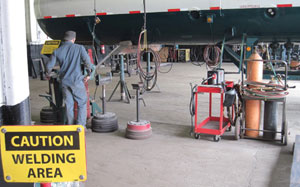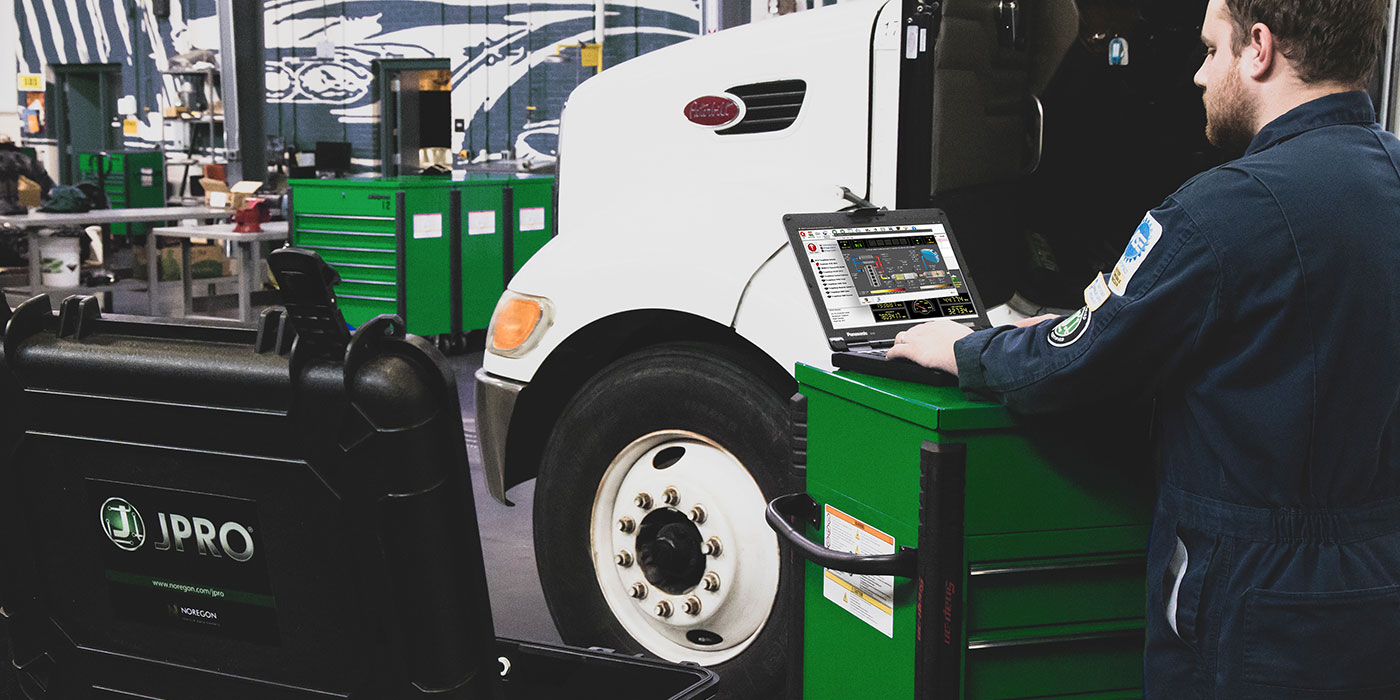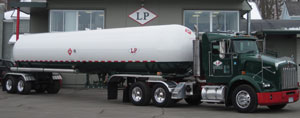 In 1915, horse-and-wagon hauler Louis Van Rompaye purchased his first motorized delivery truck—an AC Model Mack—to deliver fresh produce from New York’s black dirt region in Orange County to a growing metropolis just 60 miles south. Like the city it served (New York City), that intrepid delivery company quickly expanded, and today L.P. Transportation is regarded as the premier propane and cryogenic fuel carrier in the Northeast.
In 1915, horse-and-wagon hauler Louis Van Rompaye purchased his first motorized delivery truck—an AC Model Mack—to deliver fresh produce from New York’s black dirt region in Orange County to a growing metropolis just 60 miles south. Like the city it served (New York City), that intrepid delivery company quickly expanded, and today L.P. Transportation is regarded as the premier propane and cryogenic fuel carrier in the Northeast.
The secret to success over the past nine decades is really no secret, according to maintenance director Rick Van Haaster. L.P. Transportation Inc. simply maintains the highest possible standards in service, safety and reliability.
Once the company bought its first truck in the early 1900s, opportunity came quickly. “The delivery needs grew from fresh produce to fresh milk and Palmer Transportation (as it was known then) became one of the largest milk haulers in the state of New York, with a fleet of over 100 MACK B-Model tractors, a staff of over 30 mechanics and over 100 drivers,” explains Van Haaster. “At that time, everything was done in-house: engines were rebuilt in Palmer’s fully equipped machine shop, engines were replaced at predetermined intervals and there was even a fully functional dynamometer on premises to test the performance of each tractor.”
Over the years, the milk business changed and became very competitive. Andrew Palmer Sr., grandson of Louis Van Rompaye, saw a new market and opportunity in the transportation of liquefied petroleum gas. He purchased L.P. Transportation and began to build a new fleet of tanks designed to haul propane and specialized trailers for cryogenic products. Today, L.P. Transportation is one of the leading bulk transporters of propane, liquefied natural gas and butane throughout the Northeast from Maine to Virginia, as well as delivering gasoline, diesel, fuel oils and asphalt within the southern New York and northern New Jersey areas.
The family continues its legacy in transportation as Andy Palmer’s sons, Chris, Richard, John and Andy Jr., along with Chairman and CEO Art Ogden, a 35-year veteran in the propane and LNG industries, all continue to grow the business.
Many changes over the years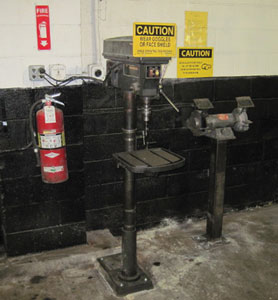
The fleet has seen many changes over almost 100 years of trucking, explains Van Haaster, but change for change’s sake was never a goal. Changes were made as needed to enhance the company’s commitment to its customers. The B-Model Mack and the R-Model Macks were the backbone of the fleet for decades, and only recently were the heavy-duty Macks replaced by lighter and more nimble chassis. In 1999, Todd Eldred, fleet director of maintenance, worked with the local Freightliner salesman to build a tractor that fit these demanding requirements—lightweight yet powerful enough to deliver a full load up and down the hills of New England, and driver-acceptable.
“Driver input has always been a priority at L.P. Transportation,” Van Haaster says. “The Freightliner was considerably lighter than the Mack models that were available at that time. Dispatchers loved the new models because they could move more fuel to our customers, drivers liked the power, and Mr. Palmer was happy with the productivity of the lightweight powerhouse. Kenworth’s T-800 also fit the growing demands of the operation. Our current fleet is now split evenly between the older lightweight Freightliners and the newer, stronger Kenworth T-800s.”
One of the goals, Van Haaster says, will be to improve the fleet’s fuel economy. “The Kenworth T660 and the International ProStar both offer aerodynamic packages such as side fairings, smaller grill designs and rear cab extenders. Better aerodynamics and strategic gearing will help improve the fleet’s overall MPG average.”
Additional aerodynamic advantages are realized by the use of single-wide tires. “The Michelin X-One wide-based single drive tires have been part of our fleet program for over three years and will continue to be specified on any new tractor we purchase,” Van Haaster says.
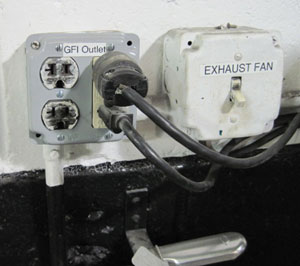
When hauling such cargo, stopping is just as important. “Air disc brakes and ABS with roll stability features will be included in our specifications,” says Van Haaster. “Shortening the stopping distance is only half the benefit of the new air disc brake systems. Longer brake pad life as compared to drum brakes, easy and quick pad replacement, and less down time for brake maintenance are also expected.”
The entire L.P. fleet was recently upgraded with Davco’s fuel-water separators, which have all but eliminated no-power complaints and performance problems related to dirty fuel filters and water in the fuel, says Van Haaster. “The Davco 382 offers a water-in-fuel (WIF) sensor in the base of the filter that will illuminate a red light on the dashboard if water is present. This filter system also allows the drivers to see when the filter is becoming dirty through the clear upside-down fuel bowl. In minus zero operations, you can actually see the wax start to form inside the fuel filter bowl before the fuel completely gels and shuts the tractor down. Many of our drivers have learned how to drain the water from the filter before power complaints occur. We went from almost 30 road calls for fuel filter problems in a year down to less than half a dozen.”
Becoming part of history
“I met Mr. Palmer over 10 years ago when I was a sales engineer for a local Freightliner dealership,” Van Haaster explains. “I was that salesman who worked with Mr. Palmer and Todd Eldred to build the lightweight tractor with all that power. It was a relationship that was built on trust. The Palmers trusted me to build a productive tractor for their fleet and that’s what was delivered. There were plenty of challenges in the details of the tractor specifications, but the end result was successful.”
Van Haaster says his experience as a salesman has been extremely advantageous to his current position with L.P. Transportation. “It was a people job, not a truck job. Customers would ask for help with a trucking challenge and I would visit their business, speak with their drivers and mechanics, and even drive their trucks to fully understand what they needed. By listening and asking lots of questions, I would understand their goals and challenges better and build them the truck or tractor that would solve those problems.”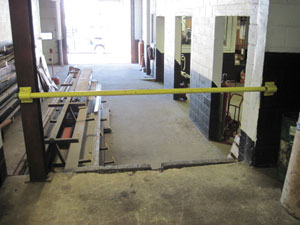
Today, much of his effort is placed on eliminating problems before they start. “L.P. Transportation already had a comprehensive and demanding preventive maintenance program in place,” Van Haaster says. “We have experienced only a few brake adjustment citations—but even a few is not acceptable. To eliminate even those few citations, we now measure the exact brake stroke of every slack adjuster at every PM on both tractors and trailers. This has helped us identify defective or incorrectly installed slack adjusters, worn S-cam bushings and defective air brake chambers that otherwise would not have been found. Applying the foot brake pedal not only allows for accurate slack adjuster measurements (at 100 PSI) but also confirms proper operation of the entire air brake system. Every trailer was also equipped with Haldex automatic brake adjusters, regardless of the age of the trailer. When properly installed and serviced, they work very well.”
In the shop, L.P. Transportation emphasizes these top 10 Shop Safety procedures:
1. Monthly shop safety inspections.
2. Daily forklift inspections.
3. Strict enforcement of forklift safety procedures.
4. Fall protection program with forklift safety cage, body harness and lanyards.
5. Full coverage of open pits and the installation of new, removable wire mesh grates.
6. Upgrading all outlets to ground fault interrupt (GFI) protection.
7. Monthly inspection of all ladders, steps and work platforms.
8. Separating welding and “hot work” from basic vehicle maintenance bays.
9. Daily pre-shift meetings with mechanics and staff.
10. Strengthened confined space procedures to include mandatory watch person.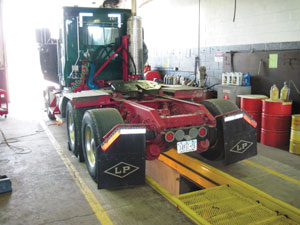
“The monthly shop safety inspections are the best way to ensure all the safety aspects of the shop environment are inspected, documented and addressed. We use the mechanics to help complete these inspections. They work closest to the tools and equipment and they are the first to know if a problem exists,” Van Haaster explains.
He suggests that you join your mechanics on their walk through the shop to make sure they don’t miss any items. Teach them not only what to inspect, but why it’s important. The most important step in the monthly shop safety inspection is the follow-up. Repair problems as quickly as possible and document them—this follow-up adds credibility to the inspection.
“Our first formal monthly safety meeting resulted in several good suggestions from the mechanics. The inspection pit needed to be updated, there were a few ladders that needed to be replaced, and a few other good suggestions. We listened, we made the investments, and the end result is a safe place to work for the mechanics and staff,” he says. “We are very fortunate to have experienced and responsible mechanics working with us today. It’s a great team; they all follow safety procedures and they all look for problems that may affect their safety or the safe operation of the vehicle.”
Sometimes, the most basic safety information is the most important:
• Remove the ignition key from the forklift when not in use;
• Never modify the forklift; and
• Never remove the roll cage.
